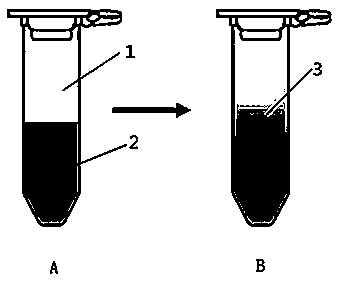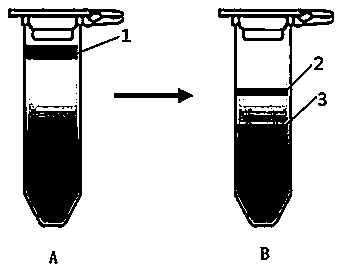Method for separation of Chinese cabbage microspores at different development stages
A developmental stage, microspore technology, applied in the field of plant biology, can solve problems such as the difficulty of consistent specific standards, the difficulty of building a Chinese cabbage regeneration system, and the difficulty of ensuring repeatability.
- Summary
- Abstract
- Description
- Claims
- Application Information
AI Technical Summary
Problems solved by technology
Method used
Image
Examples
Embodiment Construction
[0015] In the following examples, the microspores of Chinese cabbage were collected from the experimental field of the College of Horticulture, Shenyang Agricultural University; the stock solution of percoll was purchased from Sigma Reagent Company.
[0016] Implementation example 1
[0017] Test material preparation
[0018] 1. Accelerate the germination of Chinese cabbage seeds, and treat them at a low temperature of 2 to 4°C for 20 days after dew blanching, sow the germinated seeds on plug trays in the greenhouse, and collect materials at the flowering stage.
[0019] 2. Microspore crude extract preparation
[0020] Select flower buds whose petal length / anther length is between 0.5-0.75, wash them with running water for 30 minutes, put them into a sterilized small beaker, and disinfect the surface with 70% ethanol solution for 30 seconds, then wash them with 0.1% (m / v) HgCl 2 The solution was sterilized for 8 minutes, and washed with sterile water for 3 times, each time f...
PUM
 Login to View More
Login to View More Abstract
Description
Claims
Application Information
 Login to View More
Login to View More - R&D
- Intellectual Property
- Life Sciences
- Materials
- Tech Scout
- Unparalleled Data Quality
- Higher Quality Content
- 60% Fewer Hallucinations
Browse by: Latest US Patents, China's latest patents, Technical Efficacy Thesaurus, Application Domain, Technology Topic, Popular Technical Reports.
© 2025 PatSnap. All rights reserved.Legal|Privacy policy|Modern Slavery Act Transparency Statement|Sitemap|About US| Contact US: help@patsnap.com


